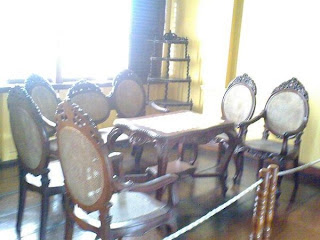My first prediction came true, Cambodia will be the next country to ratify the Asean Charter and so it was.
Pen Pagna, Chairman of the legislation and justice committee of the parliament said that the ASEAN Charter can help Cambodia to "rule by law and walk to democracy and development". They are also very much interested in the economic and social integration with their ASEAN neighbors, as laid down and written in the ASEAN Charter.
This is great news, Cambodia showing interest and believes in the ASEAN Charter as a tool for democracy and the rule of law. This can be used as a leverage for Myanmar (Burma). The ASEAN Charter is now approved by half of its 10-member states. First was Singapore last January 7, 2008; then Brunei last February 15, 2008; third is Malaysia on February 18, 2008; Laos fourth, on February 20, 2008; and now Cambodia, February
The next five that will ratify it are (in the following order of my prediction): VietNam, Indonesia, Thailand, Philippines, Myanmar.
Thailand already said that they will ratify it by June; Philippines gave word that they will start its ratification anytime soon. Indonesia on the other hand will seem to have some problems ratifying the it, but I am still optimistic that they will approve the ASEAN Charter before Thailand.
VietNam, being one of the countries that most benefited from ASEAN is set to ratify it next, and if you are not aware, VietNam is the most active ASEAN member to date having hosted many functions in different ASEAN sectors, as well as boasting how ASEAN could implement the ASEAN Economic Integration by 2010, 5 years ahead of schedule.
Philippines and Myanmar, I see the Philippines ratifying it before Myanmar, as the former already gave a statement on their change-of-heart. This is good, as once 9-member states ratify the Asean Charter, Myanmar will feel the pressure to ratify it before the 14th Asean Summit this December at Bangkok, Thailand, where it all began.
In fact, there will be a celebration already scheduled for the ratification of the ASEAN Charter by all 10-member countries, this will be held at the Saranrom Palace, where the ASEAN Declaration was signed on 8th of August 1967, 41 years ago by that time. Truly historic and a day to remember.
And I expect that this year's ASEAN Day, as per the ASEAN Charter, all 10-member countries must recognize, it will be a great day of celebration and the best time to spread ASEAN to the people themselves (enough of the Elite level media hyping). After all, August 8, 2008 is 888, for those who believes in numerology. What will happen on that day? I don't know, but I sure hope it will be positively memorable, and all countries declare it an official non-working holiday.
Congratulations to Cambodia! Thank you for your support of the ASEAN Charter, my Asean brothers and sisters!!
Sources:
Cambodian NA approves ASEAN Charter
Cambodian National Assembly approves ASEAN Charter
PS
"Asia's Perfect 10" founder, Denith, told us last week that Cambodia ratified the ASEAN Charter already, but news didn't came out until today. I can only imagine how it is like to see and hear TV and Radio stations filled with "ASEAN" and the "ASEAN Charter". I have yet to see and hear reports about it here in the Philippines. Until then, I can only imagine....

























 Our trip was organized by the students of class M2.4 of IFL (Institution of Foreign Language, one of RUPP departments). This was their second trip which was initiated for celebrating end-of-term of their school. There were 25 attendances: 12 girls.
Our trip was organized by the students of class M2.4 of IFL (Institution of Foreign Language, one of RUPP departments). This was their second trip which was initiated for celebrating end-of-term of their school. There were 25 attendances: 12 girls. (Missing someone? Irik took the picture)
(Missing someone? Irik took the picture)







 The sound of water flowing boasted our spirit, refreshed our gradually exhausted mind and replenished our inner strength. We reached our destination. We set up our private zone for picnic and unloaded and unpacked all the merchandises. And I earned my rest. Chambok was a real heaven. We were surrounded by cold, fresh and clean water. The water is not for entertaining only; it is the soul of the local people. There is a prohibition for people not to use Shampoo while bathing. Let continues our story: it was time for BBQ. After a long, exhausted journey, red-hot, butter-imbued beef and some seafood were our precious launch.
The sound of water flowing boasted our spirit, refreshed our gradually exhausted mind and replenished our inner strength. We reached our destination. We set up our private zone for picnic and unloaded and unpacked all the merchandises. And I earned my rest. Chambok was a real heaven. We were surrounded by cold, fresh and clean water. The water is not for entertaining only; it is the soul of the local people. There is a prohibition for people not to use Shampoo while bathing. Let continues our story: it was time for BBQ. After a long, exhausted journey, red-hot, butter-imbued beef and some seafood were our precious launch.
















